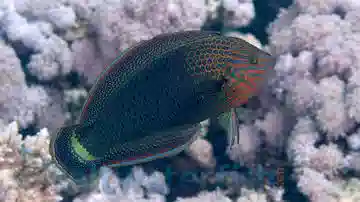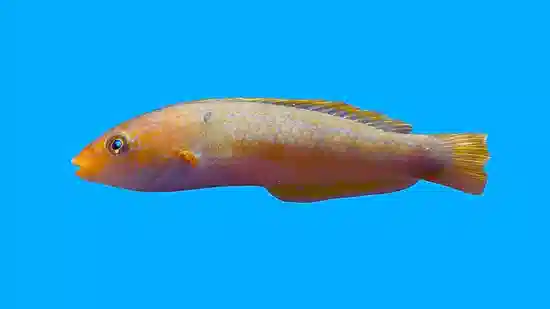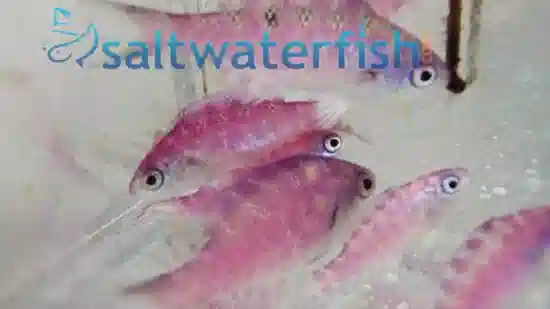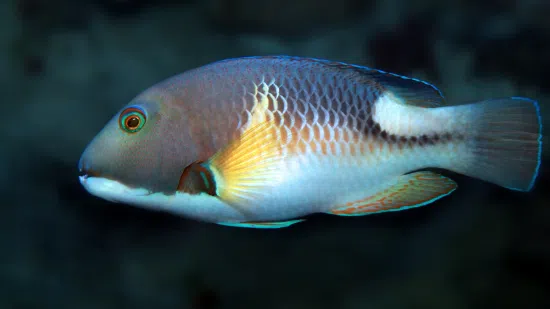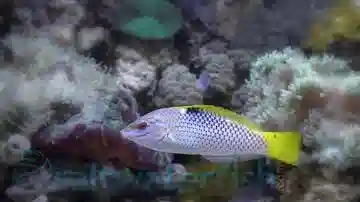Checkerboard Wrasse
Halichoeres hortulanus
(1 Reviews)

Checkerboard Wrasse
Halichoeres hortulanus
(1 Reviews)
{{ item.name }}
Size: {{ item.extra_field_3 }}
${{ getFormattedPrice(item.saleprice) }} ${{ getFormattedPrice(item.price) }}
To join the waiting list, click here
Free Shipping
With
$199.00
or more in Marine Life.
More details...
Checkerboard Wrasse Care Facts
| Care Level: | Moderate |
|---|---|
| Temperament: | Peaceful |
| Diet: | Carnivore |
| Reef Safe: | Yes |
| Minimum Tank Size: | 125 Gallons |
| Max Size: | 11 inches |
Checkerboard Wrasse (Halichoeres hortulanus): A Comprehensive Guide for Saltwater Marine Aquariums
The Checkerboard Wrasse (Halichoeres hortulanus) is a captivating species that can be valuable to your saltwater marine aquarium. This factual guide provides essential information on the care, characteristics, and compatibility of the Checkerboard Wrasse within your aquarium setup.
Where is the Checkerboard Wrasse Found
The Checkerboard Wrasse is commonly found in the Indo-Pacific, particularly in reef areas with sandy substrates and moderate water flow.
Is the Checkerboard Wrasse Safe for Reefs?
Checkerboard Wrasses are generally considered reef-safe. They do not pose a significant threat to corals or invertebrates. However, they may occasionally disturb small crustaceans.
How Big Does the Checkerboard Wrasse Get
These wrasses are relatively small, growing to an average length of approximately 4 to 5 inches (10 to 13 cm).
How Long Does the Checkerboard Wrasse LIve?
With proper care, Checkerboard Wrasses can live for 4 to 6 years, offering long-term enjoyment in your marine aquarium.
What Is the Ideal Aquarium Diet for the Checkerboard Wrasse?
Checkerboard Wrasses are carnivorous and require a varied diet. Offer them a diet of high-quality marine flakes, pellets, frozen foods like mysis shrimp and brine shrimp, and occasional live foods to maintain their health and vibrancy.
Are Checkerboard Wrasses Available to Aquaculture Hobbyists?
Aquacultured Checkerboard Wrasses are not available to hobbyists. They are typically sourced from the wild. Choose a sustainable collection option like Saltwaterfish.com.
How Are Male and Female Checkerboard Wrasses Different?
Checkerboard Wrasses exhibit sexual dimorphism. Males typically have brighter and more vibrant colors compared to females.
Are Chekerboard Wrasses Symbiotic?
Checkerboard Wrasses do not typically form symbiotic relationships with anemones or corals. They are solitary fish and prefer to forage among the sand and rocks.
Juvenile vs. Adult Coloration
Juvenile Checkerboard Wrasses display striking black and white checkerboard patterns. At the same time, adult males often develop a more solid black coloration on the posterior half of their bodies with subtle blue markings near their heads.
Compatibility
Checkerboard Wrasses are known for their peaceful temperament but can become territorial with other wrasses or similar-looking fish.
Temperament
These wrasses are active swimmers and add movement and vibrancy to the aquarium as they swim and explore their environment.
Suitable Tank Mates
- Firefish Goby (Nemateleotris magnifica): Peaceful and visually appealing, they occupy a different niche in the tank.
- Royal Gramma (Gramma loreto): A striking and peaceful fish that complements the Checkerboard Wrasse's temperament.
- Kole Tang (Ctenochaetus strigosus): Peaceful and known for their algae-eating behavior, which can be beneficial.
- Clownfish (Amphiprioninae): Compatible with some species of clownfish, provided they are not overly aggressive.
- Pajama Cardinalfish (Sphaeramia nematoptera): Peaceful schooling fish that add visual interest to the tank.
Tank Requirements for the Checkerboard Wrasse
- Minimum Aquarium Size: A tank with a capacity of 30 gallons or more is suitable for housing Checkerboard Wrasses.
- Aquascaping: Provide a sandy substrate for them to sift through and live rock structures with hiding spots. A mature tank with ample copepod populations is beneficial.
Water Conditions for the Checkerboard Wrasse
- pH: Maintain the pH level between 8.1 and 8.4.
- Salinity: Keep the salinity within the range of 1.023 to 1.025.
- Water Temperature: The recommended temperature range is 75°F to 82°F (24°C to 28°C).
- Water Flow: A moderate water flow can replicate their natural environment.
Other Common Names for the Checkerboard Wrasse
The Checkerboard Wrasse may also be the Checkerboard Hogfish, Mable Wrasse, or the Blackspot Wrasse.
Why Choose Checkerboard Wrasses from Saltwaterfish.com
Selecting Checkerboard Wrasses from Saltwaterfish.com offers marine enthusiasts the opportunity to introduce a visually captivating and peaceful species to their saltwater marine aquarium. Our commitment to providing healthy and well-acclimated specimens ensures you receive robust and vibrant fish for your aquatic environment. With our extensive experience and dedication to marine life, Saltwaterfish.com is a dependable source for enthusiasts seeking quality marine species.
In summary, the Checkerboard Wrasse's striking appearance, peaceful temperament, and suitability for reef tanks make it an excellent addition to your saltwater marine aquarium. By adhering to their specific care requirements and considering their compatibility with tank mates, you can enjoy the dynamic presence this captivating marine inhabitant brings to your tank.
Nice fish
Reviewed by: Alvin Barbes on June 27, 2023


